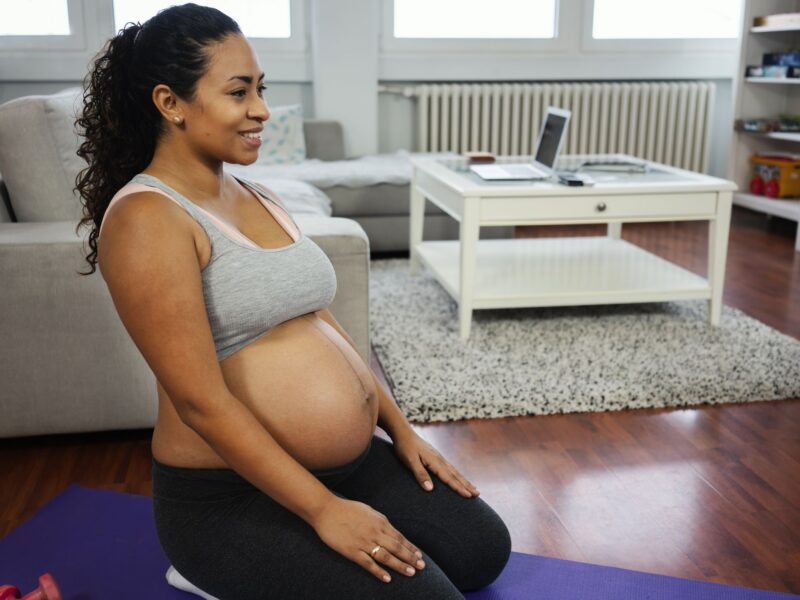The journey of pregnancy is one of the most transformative experiences in a woman’s life, both physically and emotionally. Throughout this journey, maintaining fitness becomes a crucial component not only for the mother’s well-being but also for the healthy development of the baby.
Pre- and post-natal fitness encompasses tailored exercises and guidelines designed to support women through each stage of pregnancy and during the postpartum period. This exploration delves into the importance of safe exercise during pregnancy, the benefits it offers, and the considerations for post-natal recovery, empowering women to prioritize their health and wellness during this remarkable phase of life.
The Importance of Pre-Natal Fitness
Pregnancy is a time of profound physical changes as the body adapts to support the growing fetus. Engaging in regular exercise during pregnancy offers a myriad of benefits for both the mother and the baby.
Firstly, maintaining a consistent exercise routine can help alleviate common discomforts associated with pregnancy, such as back pain, swelling, and fatigue. Gentle exercises such as prenatal yoga or swimming can promote relaxation and reduce stress, contributing to a more comfortable pregnancy experience.
Furthermore, pre-natal fitness plays a crucial role in improving cardiovascular health and circulation, which is essential for the proper delivery of nutrients to the baby. By strengthening the heart and improving blood flow, exercise can help reduce the risk of gestational diabetes and preeclampsia, two serious conditions that can arise during pregnancy.
Additionally, staying active during pregnancy can help women manage weight gain and maintain a healthy body mass index (BMI), reducing the likelihood of complications such as preterm birth and excessive weight gain. Exercise also boosts mood and promotes mental well-being by releasing endorphins, the body’s natural feel-good hormones, thereby reducing the risk of depression and anxiety during pregnancy.
Safe Exercise Guidelines During Pregnancy
While exercise during pregnancy is generally encouraged, it’s essential to follow specific guidelines to ensure the safety of both the mother and the baby. Firstly, it’s crucial to consult with a healthcare provider before starting any exercise program, especially if there are pre-existing medical conditions or concerns. A healthcare provider can offer personalized recommendations based on individual health status and pregnancy progression.
In general, low-impact exercises that are gentle on the joints and support the abdomen are recommended during pregnancy. These may include walking, swimming, stationary cycling, and prenatal yoga. Activities that involve a high risk of falling or impact, such as contact sports or vigorous running, should be avoided to minimize the risk of injury.
It’s essential to listen to the body and pay attention to signs of fatigue, dizziness, or discomfort during exercise. Hydration is also crucial, as pregnant women are more susceptible to dehydration. Drinking plenty of water before, during, and after exercise helps maintain optimal hydration levels.
Furthermore, it’s essential to modify exercises as pregnancy progresses to accommodate the changing body. Avoiding exercises that involve lying flat on the back after the first trimester is recommended, as it can restrict blood flow to the uterus. Instead, opt for side-lying positions or exercises performed in an elevated position.
Benefits of Post-Natal Fitness

After childbirth, the focus shifts to post-natal fitness, which plays a vital role in supporting the mother’s physical and emotional recovery. Post-natal exercise helps women regain strength and tone in the muscles that may have weakened during pregnancy, particularly in the abdomen, pelvic floor, and lower back. Strengthening these muscles is essential for improving posture, reducing back pain, and preventing pelvic floor disorders such as urinary incontinence.
Furthermore, post-natal fitness can aid in weight loss and restoring pre-pregnancy fitness levels. Combined with a balanced diet, regular exercise can help shed excess pregnancy weight and improve overall body composition. However, it’s essential to approach post-natal fitness with patience and compassion, understanding that the body needs time to heal and recover after childbirth.
In addition to physical benefits, post-natal exercise offers emotional support and stress relief for new mothers. The release of endorphins during exercise can help alleviate postpartum mood disorders such as postpartum depression and anxiety, promoting a sense of well-being and empowerment.
Considerations for Post-Natal Exercise: While post-natal exercise is beneficial, it’s essential to proceed with caution and prioritize safety and recovery. In the immediate postpartum period, the body undergoes significant changes as it heals from childbirth. Women are advised to wait until they receive clearance from their healthcare provider before resuming exercise, typically around six weeks postpartum for a vaginal delivery and longer for a cesarean section.
During the initial postpartum period, focus on gentle exercises that promote healing and engage the core and pelvic floor muscles. Pelvic floor exercises, also known as Kegels, are particularly important for strengthening the pelvic floor and improving bladder control. Gradually progress to more challenging exercises as strength and endurance improve.
It’s essential to listen to the body and avoid overexertion or pushing through pain during post-natal exercise. Pay attention to any signs of discomfort or fatigue and modify exercises as needed. Additionally, breastfeeding mothers should ensure adequate hydration and nutrition to support milk production and replenish energy stores.
Incorporating relaxation techniques such as deep breathing and mindfulness exercises can also aid in stress reduction and promote overall well-being during the post-natal period. Remember that self-care is essential, and it’s okay to ask for support from partners, family members, or healthcare professionals as needed.
Conclusion
Pre- and post-natal fitness plays a vital role in supporting the health and well-being of women during pregnancy and the postpartum period. By engaging in safe and appropriate exercise, women can experience numerous benefits, including improved physical health, emotional well-being, and enhanced recovery after childbirth.
However, it’s essential to approach pre-and post-natal fitness with caution, listening to the body’s cues and seeking guidance from healthcare providers as needed. Through mindful exercise and self-care, women can navigate the journey of pregnancy and motherhood with confidence and resilience, nurturing both themselves and their growing families.
Related Tags
Taiwo Olawuyi
Taiwo Olawuyi is a highly dedicated and passionate professional blogger, renowned for her ability to create captivating, informative, and engaging content in the realm of health and wellness. She holds a Bachelor's degree in Political Science from Olabisi Onabanjo University and a Master's degree in Adult Education from the prestigious University of Ibadan. Her profound passion for health and wellness, coupled with her unwavering dedication to her audience, serves as a constant source of inspiration and enlightenment for readers worldwide.










